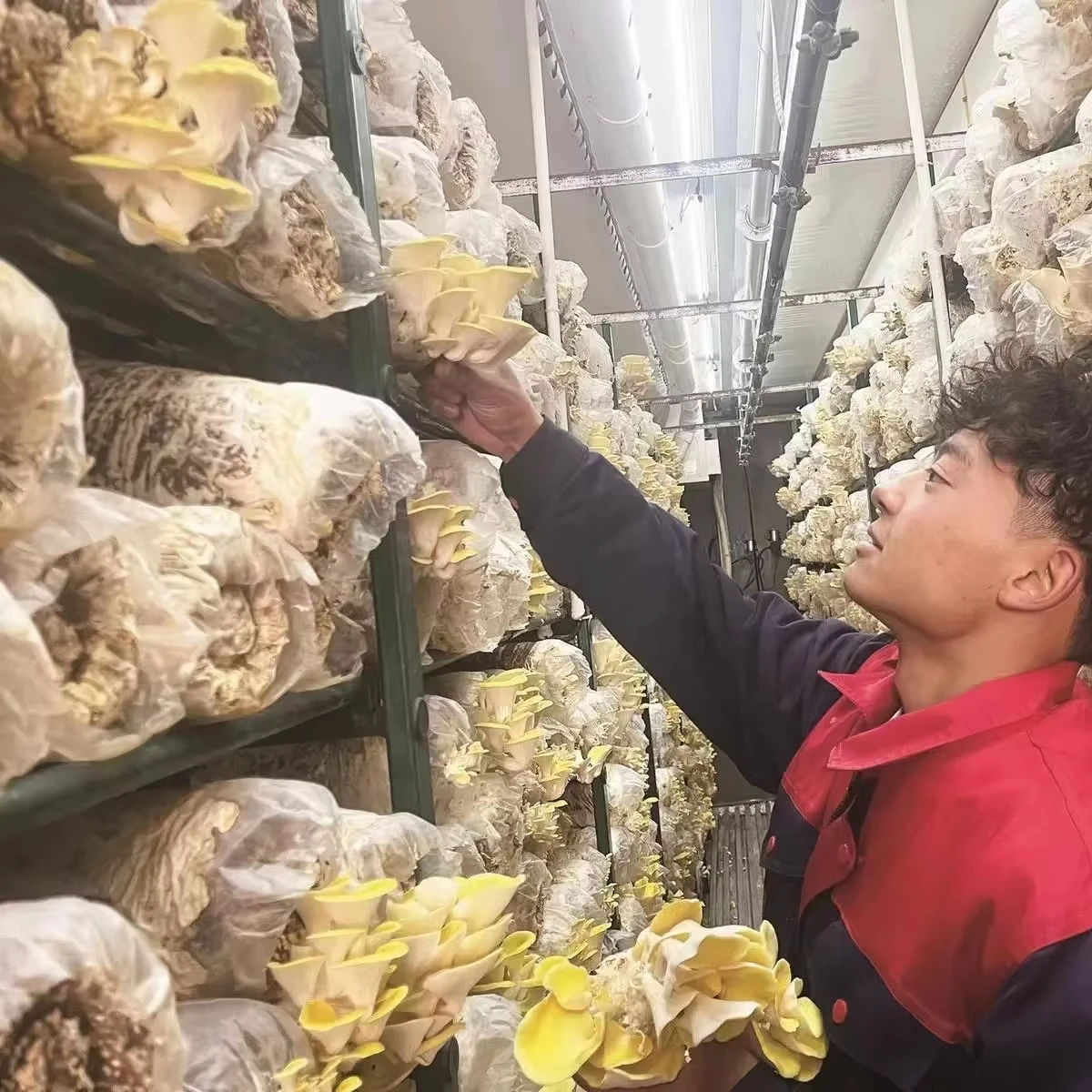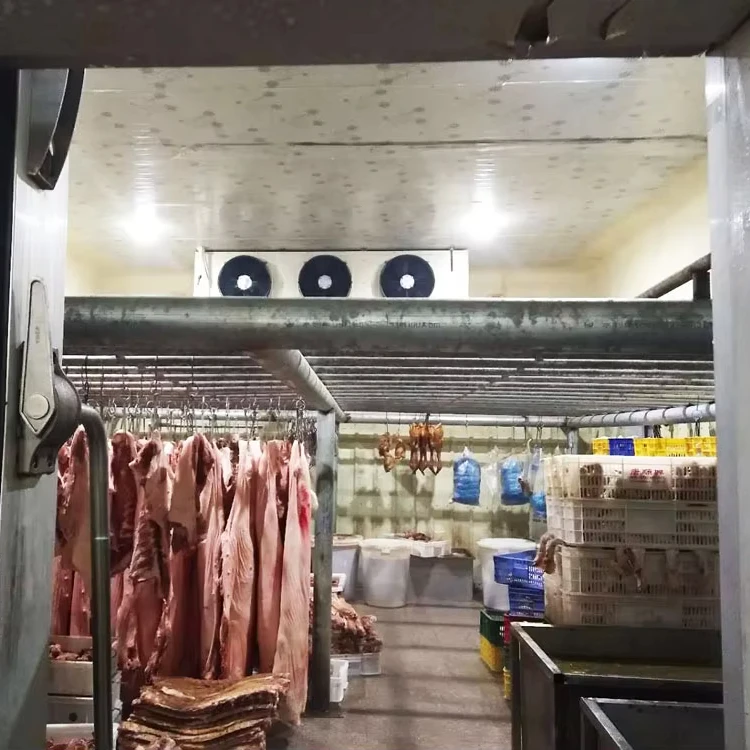Cold room—also known as refrigerated storage rooms—are specialized temperature-controlled environments designed to preserve perishable products such as food, pharmaceuticals, and biological materials. They play a vital role in industries like food processing, logistics, medicine, and agriculture, ensuring that goods maintain quality, freshness, and safety throughout storage and distribution. With the growth of global supply chains and temperature-sensitive industries, cold room has evolved into highly efficient, reliable, and technologically advanced systems.
1. Characteristics of Cold Rooms
Temperature Control and Insulation
The defining characteristic of a cold room is its precise temperature control, typically ranging from +15°C to –40°C, depending on the application. High-efficiency insulation panels—often made from polyurethane (PU), polyisocyanurate (PIR), or polystyrene (EPS)—are used to minimize thermal exchange between the interior and exterior environments. This insulation capability ensures temperature stability even in hot and humid climates.
Modular Construction
Modern cold rooms are usually modular in design, allowing flexible assembly and disassembly. Panels with tongue-and-groove joints and cam-lock systems make it easy to construct rooms of various sizes and shapes. Modular systems also simplify transport, installation, and future expansion or relocation.
Structural Components
A standard cold room consists of insulated wall panels, ceiling panels, floor panels, refrigeration units, cold room doors, and control systems. The panels form a sealed envelope that prevents heat gain and moisture intrusion. The refrigeration system—comprising compressors, condensers, evaporators, and controllers—maintains the desired temperature and humidity.
Environmental and Hygiene Features
Cold rooms are designed for clean, hygienic environments. Surfaces are smooth, non-porous, and corrosion-resistant, often made from pre-painted galvanized steel, stainless steel, or aluminum. Rounded interior corners, easy-to-clean floors, and proper drainage systems are incorporated to comply with food safety and hygiene standards such as HACCP and ISO 22000.
Automation and Control Systems
Advanced cold rooms integrate digital temperature and humidity controllers, data loggers, and IoT-based monitoring systems. These allow real-time data tracking, automatic defrost cycles, and alarm systems that alert users to any deviations from set parameters. Energy management systems also optimize power consumption by adjusting compressor operation based on demand.
2. Advantages of Cold Rooms
Preservation of Product Quality
The primary advantage of a cold room is the preservation of perishable goods. By maintaining stable low temperatures and humidity levels, it slows down bacterial growth and enzymatic activity, preventing spoilage. This ensures extended shelf life and reduced product waste in sectors like food and pharmaceuticals.
Wide Temperature Range Applications
Cold rooms can be configured for various applications—from chilled storage (+2°C to +8°C) for dairy and beverages to frozen storage (–18°C to –25°C) for meat, seafood, and frozen foods, and deep-freeze rooms (–30°C or lower) for industrial or laboratory use. Some designs even support dual-temperature zones for mixed storage.
Energy Efficiency
Modern cold rooms are built with high thermal insulation efficiency and energy-saving refrigeration systems. Features such as inverter compressors, LED lighting, smart defrosting, and variable-speed fans reduce energy consumption. The use of environmentally friendly refrigerants like R404A, R448A, or CO₂ further lowers environmental impact.
Flexibility and Scalability
The modular structure of cold rooms allows easy customization. Businesses can expand capacity or adjust layouts to meet changing demands. Modular components can be relocated or reassembled at a new site with minimal downtime, making them cost-effective for dynamic operations.
Compliance and Safety
Cold rooms are designed to comply with international safety and hygiene standards, including CE, ISO, and GMP certifications. Proper temperature control ensures product safety, which is crucial for food and medical storage. Alarm and monitoring systems provide added reliability and security.
Reduced Maintenance and Long Service Life
When properly manufactured and maintained, cold rooms offer long-term durability. The corrosion-resistant materials, robust insulation, and efficient mechanical systems result in lower maintenance costs and extended operational life compared to conventional storage facilities.
3. Key Considerations During Manufacturing
While designing and manufacturing a cold room, several technical and quality factors must be carefully considered to ensure optimal performance and reliability.
Insulation Quality and Panel Design
Insulation is the heart of cold room performance. Manufacturers must select high-density PU or PIR panels with uniform foam distribution and a density of around 38–45 kg/m³. The panel thickness varies depending on temperature requirements—typically 75 mm for chilled rooms and 100–150 mm for frozen rooms. Proper panel joining mechanisms (cam locks, sealants, or gaskets) are essential to ensure airtightness and prevent thermal bridging.
Refrigeration Equipment Selection
Choosing suitable refrigeration units is crucial. The system must match the room’s volume, insulation thickness, and heat load. Common configurations include split systems, monoblock units, or remote condensing systems. Compressors from reputable brands (e.g., Bitzer, Copeland, Danfoss) ensure reliability and energy efficiency. Evaporator coils should be made of aluminum fins with copper tubes to resist corrosion.
Door Design and Sealing
Cold room doors are critical points for maintaining airtightness. They must include thermal breaks, magnetic gaskets, and heating elements to prevent frost build-up. Options include hinged, sliding, or automatic doors, depending on operational needs. Door heaters are particularly important in freezer rooms to avoid condensation and ice formation.
Flooring and Drainage
Floor design should support heavy loads while ensuring thermal insulation. For frozen rooms, the floor includes anti-freeze heating systems to prevent ice accumulation beneath insulation layers. Non-slip, easy-to-clean surfaces made from aluminum checker plates or reinforced resin coatings enhance safety and hygiene.
Electrical and Control Systems
Manufacturers must integrate temperature sensors, controllers, and alarm systems that meet accuracy and safety standards. The electrical wiring should be moisture-proof, and control panels must be installed outside the cold area to prevent condensation. Smart control systems can also be connected to remote monitoring platforms for better management.
Ventilation and Defrosting
Proper airflow design ensures uniform cooling inside the room. Automatic or timed defrosting systems—via hot gas, electric, or air circulation—prevent ice build-up on evaporator coils, maintaining system efficiency.
Compliance and Testing
Every cold room must undergo performance testing, including thermal leakage tests, refrigerant pressure tests, and operational trials before delivery. Compliance with standards such as ISO 21922 (refrigerated storage design) and EN 378 (refrigeration safety) guarantees quality and safety.
4. Technical Specifications
Below are standard technical parameters typically adopted in cold room manufacturing and installation:
|
Item |
Specification |
|
Temperature Range |
+15°C to –40°C (customizable) |
|
Insulation Panel Material |
PU, PIR, or EPS sandwich panel |
|
Panel Thickness |
75 mm (chiller), 100–250 mm (freezer) |
|
Panel Density |
38–45 kg/m³ |
|
Panel Surface Material |
Pre-painted galvanized steel (0.5–0.8 mm thick), stainless steel optional |
|
Floor Load Capacity |
2000–5000 kg/m² depending on design |
|
Door Type |
Hinged/sliding/automatic with heater and gasket |
|
Refrigeration System |
Hermetic or semi-hermetic compressor, air-cooled or water-cooled condenser |
|
Defrost Method |
Air, electric, or hot-gas defrost |
|
Humidity Control |
65–90% RH adjustable (optional) |
|
Control System |
Digital thermostat, microprocessor or PLC-based with alarm |
|
Power Supply |
220V/1Ph/50Hz or 380V/3Ph/50Hz (customizable) |
|
Lighting |
LED vapor-proof lighting, IP65 rated |
|
Standards |
ISO 21922, EN 378, HACCP, CE, GMP |







 ONLINE
ONLINE